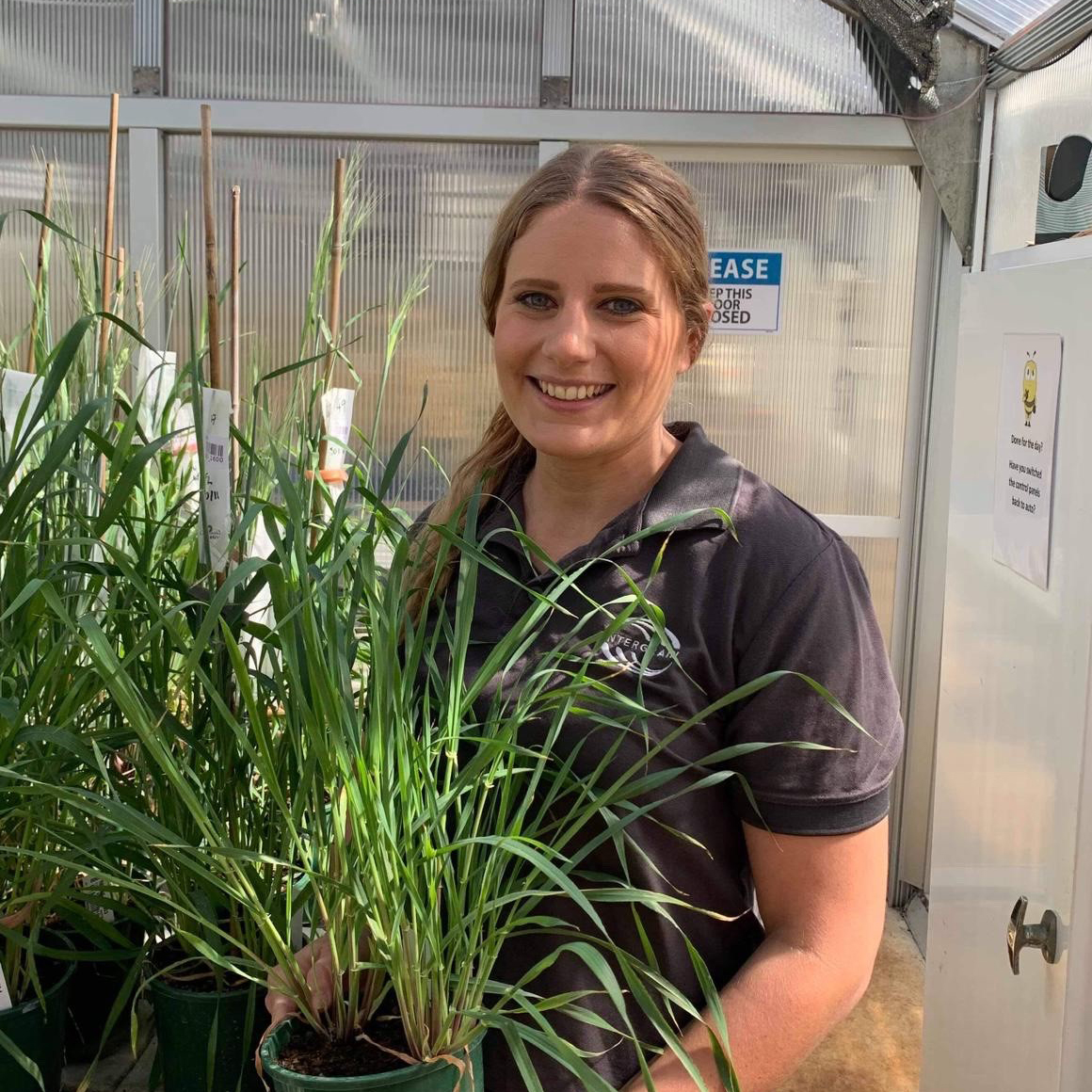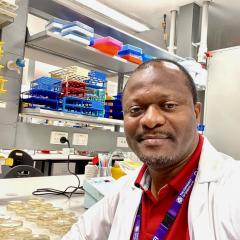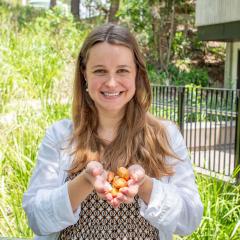Dr Hannah Robinson’s two-year Industry Fellowship at The University of Queensland and cereal breeder InterGrain has helped speed up the translation of research into commercial breeding to develop improved cereal crop varieties.
The plant breeder and adjunct fellow at UQ’s Queensland Alliance for Agriculture and Food Innovation hopes the joint role will serve as a model for others to help shape the next generation of plant breeders.

“We always talk about the translation to industry, but through this fellowship, I think we are turbo charging it,” Dr Robinson said.
“By connecting students to the industry and giving them access to data sets we enable them to gain a clearer understanding of plant breeding.
“The students analyse the data and work on solutions that suit the breeding program, allowing research outcomes and yield gains to be translated quickly and efficiently.
“You need both the ideas and the practical approach to bring the two together. That’s where you find the impact to enable us to produce more with fewer inputs, which is what we need to achieve.”
Over her two years in the joint role, Dr Robinson worked with 12 Masters students and PhD candidates on various projects.
She said the advantages of the collaboration were evident across many project examples, including her work with a masters student on the disease stripe rust, a pathogen that causes large losses in wheat varieties and continues to evolve and break down resistance in our wheat lines.
“Fortunately, InterGrain had ten years of data from different artificially inoculated nurseries for stripe rust on the east coast,” Dr Robinson said.
“We were able to analyse the data and pull out the key regions of the genome that are influencing its resistance across pathotypes and environments.
“That means we can create a more robust and durable disease resistance and provide the information breeders need to select for those areas of the genome in their breeding program.”
The second example comes from an ARC Linkage project in barley root architecture.
“We wanted to take the UAV and multi-spectral camera technology that breeders already use and see if we can design algorithms that use that information to predict root systems underground,” she said.
“The aim is to allow breeders to select for the optimum root system for their targeted growing environment and combine it with above-ground traits to develop more environmentally adaptive barley varieties.
“It’s about having access to the breeding program data, understanding and analysing it and then collaborating with breeders to develop improved crop varieties.
“The biggest outcome here is that the close working relationship between academia and commercial breeding results in the rapid translation of practical research outcomes in Australian agriculture.”
This successful Industry Fellowship model will next be adapted by the Australian Research Council’s Training Centre in Predictive Breeding led by Professor Lee Hickey, which will develop cutting-edge technologies and deliver world-class training for plant and animal breeding industries in Australia.
This project is funded by the Australian Research Council, InterGrain, The University of Queensland and the Department of Agriculture and Fisheries.
Images are available via Dropbox.
Media: Dr Hannah Robinson, h.robinson1@uq.edu.au, +61 488 279 694; QAAFI Media, Natalie MacGregor, n.macgregor@uq,edu.au, +61 409 135 651.
The Queensland Alliance for Agriculture and Food Innovation is a research institute at The University of Queensland supported by the Queensland Government via the Department of Agriculture and Fisheries



